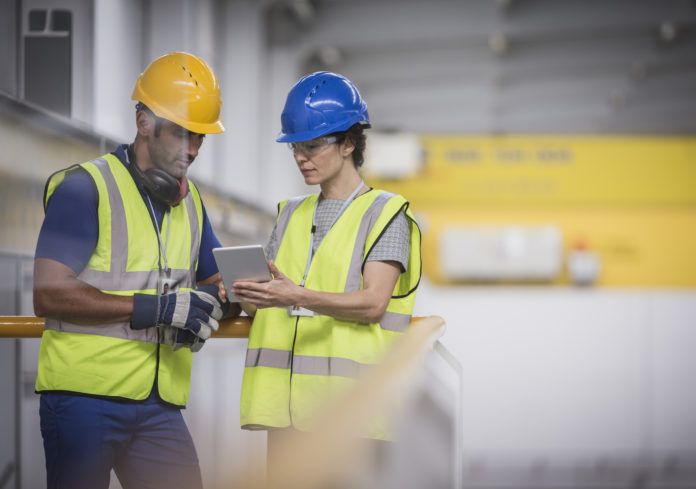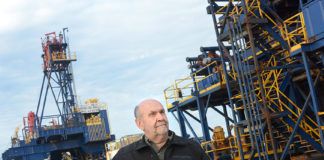We talk a lot about safety traps in the workplace—the common occurrences that can cause people to make mistakes that can lead to on-the-job incidents. But identifying potentially hazardous conditions is only part of the equation.
What is safety peer checking?
 Safety peer checking is one of the human performance tools that requires more than one person. The two workers involved in the safety peer check must also be involved in the work together.
Safety peer checking is one of the human performance tools that requires more than one person. The two workers involved in the safety peer check must also be involved in the work together.
The fact that the two people involved in the peer check have been working together on the same job is important because for a peer check to be successful, it must come from someone familiar with the task under the specific conditions that exist at the time of the check. One point we must underscore is that the benefit of a peer check is lost if the work has already been completed. Verifying whether an action is correct has little effect if the wrong action has already been taken.
It is also important for a peer check to be performed by a peer. While this sounds somewhat self-explanatory, the peer check cannot come from an employee who is junior or senior to the other person. If an apprentice is asked to verify the next action in a process for a master craftsman, it is easy to assume that even if the junior employee knows the action is incorrect, it is possible that he or she would defer to the senior employee’s judgment.
Note: The previous statement notwithstanding, every employee should feel confident in his or her ability—and obligation—to stop a job if something doesn’t look right or could lead to an incident.
USING SAFETY PEER CHECKING TO AVOID POTENTIAL TRAPS
Overconfidence
Overconfidence can often be mistaken for perceived time pressure (another trap we coach employees to avoid), but in the case of overconfidence, incidents occur because preventive safety barriers were not in place. This is usually because an operator assumed that he or she felt sure about what he/she was doing, and an incident was not likely.
Using the peer check during times when the overconfidence trap is present requires employees to self-evaluate during a time when they are least likely to do so.
In a lot of operations, asking for a peer check has been viewed as a weakness because the need for a peer check means someone doesn’t know what he/she is doing. This assumption is false, and it is a dangerous mindset for anyone to have.
For an organization’s safety culture to thrive, workers must have the ability to ask for help or verification that an employee’s next action is the correct one.
Physical Environment
Peer checking can also be used to avoid the trap of hazards in the physical environment.
Working on a specific piece of equipment or on a designated task can often cause tunnel vision. Getting caught up in the next step of a procedure can cause employees to lose sight of the physical environment in which they are operating.
Conflicting operations could have positioned new hazards in an employee’s work environment: weather conditions could change, making operations unsafe, or even the movement of other employees might have put them in a potentially hazardous situation.
Having another employee verify that your next action is clear of all possible hazards in the physical environment is often valuable.
Stress and Fatigue
While there are other human performance tools to help prevent incidents associated with mental and physical stress and fatigue, the peer check is another level of protection in the Swiss cheese model of incident prevention.
Peer checks can be used before any step in a job, and they can also be used to evaluate a fellow employee’s level of fatigue. Signs of fatigue can be seen in employees you work alongside, often before they even realize that they’re suffering from the effects.
There is still a stigma in industrial and trade settings associated with asking for help or for someone to double check an action you are about to take. But safety peer checking is useful for you and your employees to work safely and more efficiently.
As with every human performance tool, you get buy-in from the men and women on the front line by leading by example and coaching them in developing their new behavior.
Give your employees the opportunity to see you and your management team using the tools when you’re out on the job site. Talk to them about their work, and ask if they can show you some of the potential traps that exist for the jobs they do on a daily basis.
For additional information on safety peer checking or any of the other tools we use in the Knowledge Vine methodology, we have a helpful video training series, or you can contact us directly.
Toolbox Talks offers quick insights and thoughts to use for your toolbox (tailboard) talks. Dave Sowers is a founding member of Knowledge Vine, a veteran-owned human performance training and consulting organization that strives to reduce the frequency and severity of human errors in the workplace. He has almost 30 years of experience in power generation and the utility industry. He is a veteran of U.S. Navy Nuclear Power Program and holds a bachelor’s degree in resources management and a master’s degree in both management and emergency management and homeland security.



